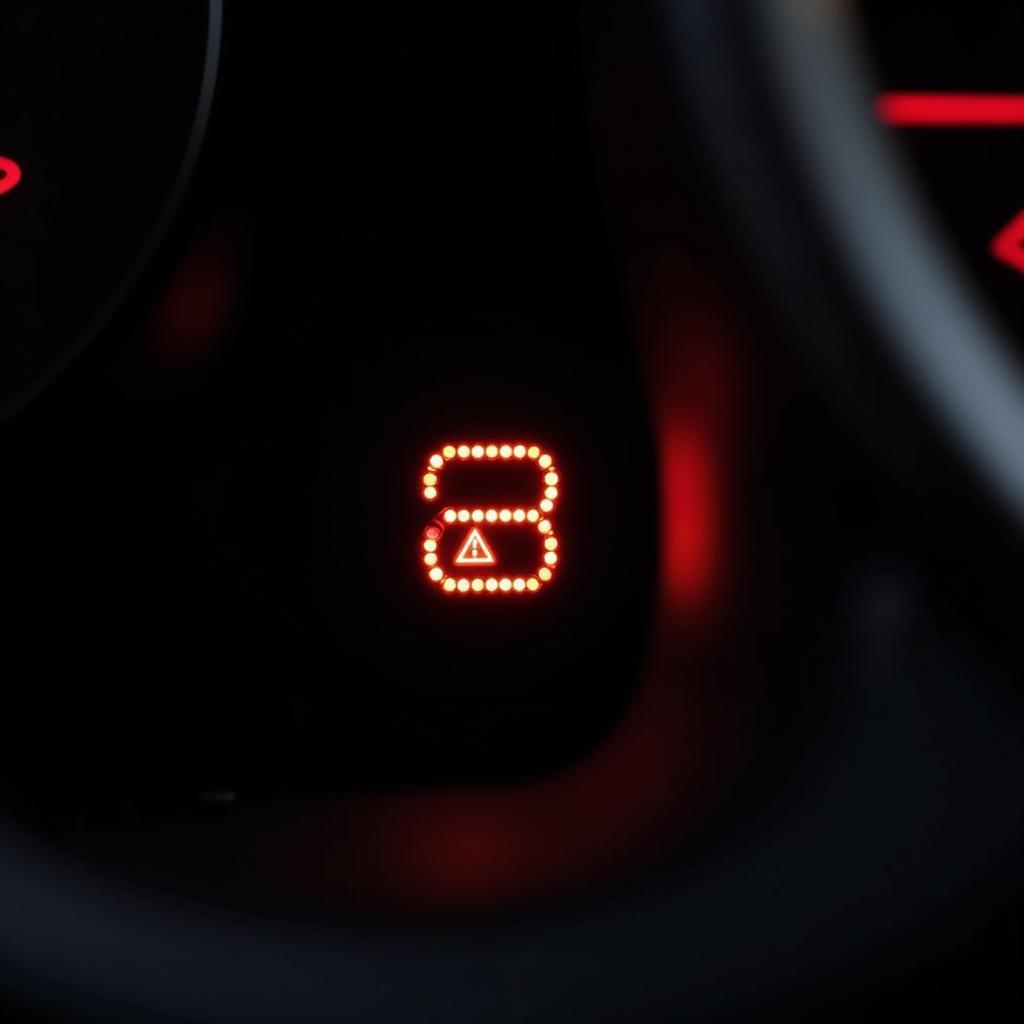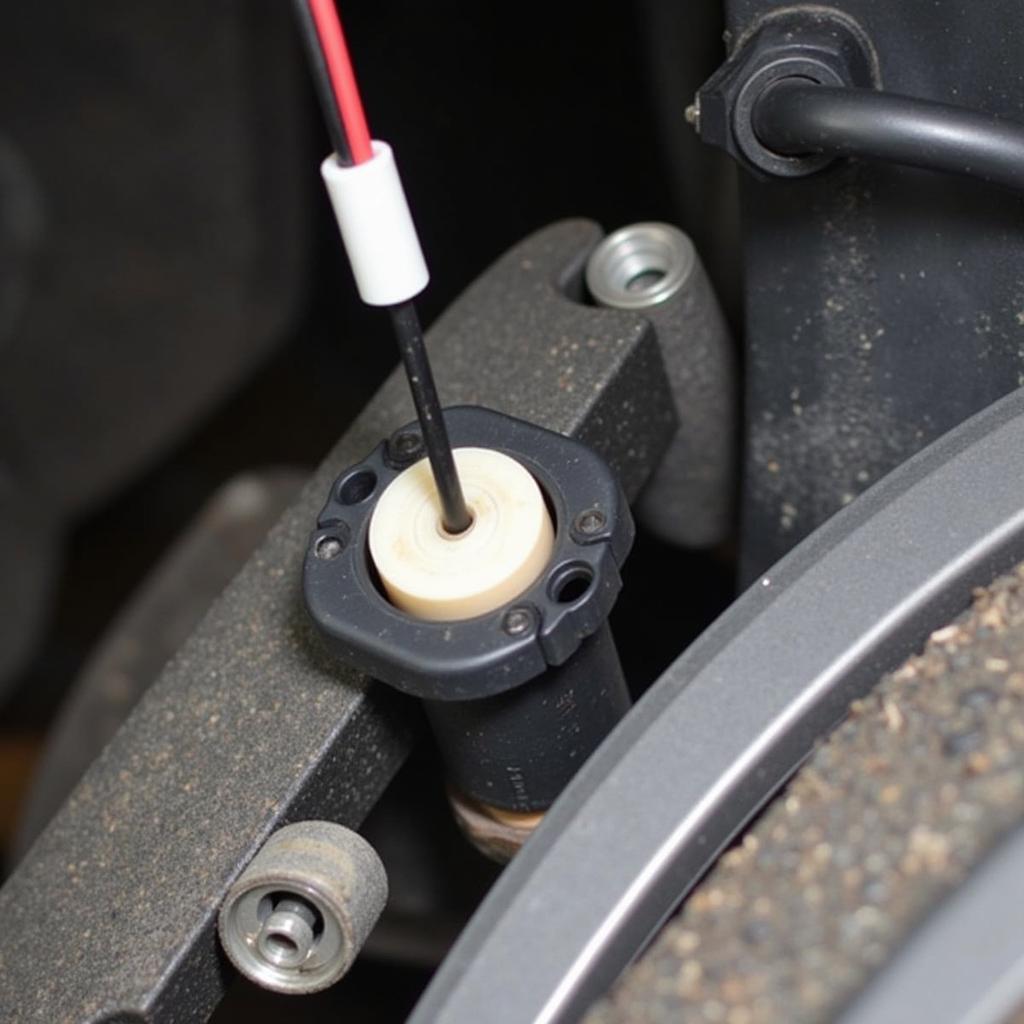Understanding when the year brake warning light was mandated is crucial for both vehicle safety and ensuring your car meets legal requirements. This light, a critical component of your braking system, alerts you to potential issues that could compromise your ability to stop effectively. This article will delve into the history and regulations surrounding the brake warning light, providing valuable insights for car owners and enthusiasts alike.
The History of Brake Warning Lights
Brake warning lights have evolved significantly over the years. Initially, they were simple indicators of low brake fluid levels. However, as braking systems became more complex, the function of the warning light expanded to encompass a wider range of potential issues, including malfunctioning anti-lock braking systems (ABS) and electronic stability control (ESC).
Early Regulations and the Introduction of Standardized Warning Lights
Early automotive regulations focused primarily on basic safety features, like headlights and taillights. As cars became more prevalent and accidents increased, the need for more comprehensive safety standards became evident. This led to the gradual introduction of regulations regarding brake warning lights. While pinpointing the exact year the brake warning light was mandated globally is challenging due to varying regulations across countries, the general consensus points towards the late 1960s and early 1970s as the period when standardized brake warning lights became mandatory in most developed countries.
“The standardization of the brake warning light was a significant step towards enhancing road safety,” says automotive historian Dr. Amelia Carter. “It ensured drivers received consistent and clear warnings about potential brake system failures, regardless of the vehicle they were driving.”
Understanding the Modern Brake Warning Light
The modern brake warning light is no longer a simple indicator of low brake fluid. It serves as a comprehensive warning system that can alert drivers to a variety of issues. These include:
- Low brake fluid: This remains a primary function of the warning light.
- Malfunctioning ABS: A separate light or a combined light may indicate issues with the ABS.
- Issues with the electronic parking brake: Modern vehicles with electronic parking brakes often utilize the brake warning light to signal malfunctions.
- Problems with the brake pressure sensor: A faulty sensor can trigger the warning light.
Why is the Brake Warning Light Important?
The brake warning light is a crucial safety feature that can prevent accidents. By alerting drivers to potential brake problems, it allows them to address the issue before it becomes a dangerous situation. Ignoring a lit brake warning light can lead to brake failure, resulting in loss of control and potentially serious accidents.
 Modern Car Dashboard with Illuminated Brake Warning Light
Modern Car Dashboard with Illuminated Brake Warning Light
“A lit brake warning light should never be ignored,” emphasizes automotive engineer John Miller. “It’s a clear sign that something is wrong with your braking system and needs immediate attention.”
What to Do When Your Brake Warning Light Comes On
If your brake warning light comes on, you should take the following steps:
- Check your brake fluid level. If the fluid is low, add more. However, if the fluid level continues to drop, it indicates a leak that needs professional attention.
- Test your brakes. Carefully apply the brakes to assess their responsiveness. If they feel spongy or unresponsive, have the vehicle inspected immediately.
- Have your car inspected by a qualified mechanic. Even if you top up the brake fluid and the brakes seem to be working fine, it’s essential to have a mechanic diagnose the underlying cause of the warning light.
 Mechanic Inspecting a Vehicle's Brake System
Mechanic Inspecting a Vehicle's Brake System
Conclusion
Understanding the significance of the year brake warning light was mandated underscores the importance of vehicle safety regulations. This seemingly small light plays a vital role in preventing accidents and ensuring road safety. Never ignore a lit brake warning light. Prompt action can prevent potentially dangerous situations.
FAQ
- What does the brake warning light look like? It’s typically a red or amber symbol that resembles a circle with parentheses on either side.
- Can I drive with the brake warning light on? It’s not recommended. Driving with a lit brake warning light can be extremely dangerous.
- What could cause the brake warning light to come on? Low brake fluid, malfunctioning ABS, issues with the electronic parking brake, or problems with the brake pressure sensor.
- How much does it cost to fix a brake warning light issue? The cost varies depending on the underlying cause.
- Is the brake warning light the same as the ABS light? They can be separate or combined, depending on the vehicle.
- What should I do if my brake warning light comes on and my brakes feel spongy? Stop driving immediately and have your vehicle towed to a mechanic.
- Can I check my brake fluid myself? Yes, locate the brake fluid reservoir under the hood and check the fluid level.



